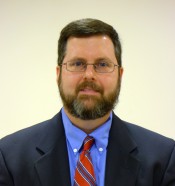Speakers
The use of large-scale climate data to predict drought, river flows, and vegetation over Central-Southwest Asia
Matt Barlow is an assistant professor in the Department of Environmental, Earth, and Atmospheric Sciences at the University of Massachusetts Lowell. His research focuses on understanding how large-scale climate variability and change influence local conditions, especially with regard to societal impacts. A particular research focus is the dynamics and predictability of severe drought, which has been supported by NSF and NOAA. He is an Associate Editor at the Journal of Climate and currently a member of the Phenomena, Observations, and Synthesis (POS) Panel of US CLIVAR.
Abstract
Central-Southwest Asia is a semi-arid, economically stressed region where droughts have severe societal impacts in terms of agriculture, farming, access to fresh water for drinking, and sanitation. There are two sources of drought predictability for this area: the influence of predictable modes of large-scale climate variability at both seasonal and intraseasonal timescales, and the importance of the snow pack to warm season river flows and vegetation. Local data scarcity is a critical problem for the region, both for historical analysis and for real-time monitoring. However, analysis shows that satellite data can be used to provide a considerable amount of high-resolution local information about the region, and that operationally-available large-scale climate data adequately captures the influence of regional-scale variable and, critically, can also be used to infer the snow pack. These different aspects of predictability can be combined to provide information at a range of time-scales from seasonal to daily, but communication of the predictions to the relevant decision-makers in the region has proven difficult.
Data challenges in the DataONE project
John Cobb is a researcher at the Oak Ridge National Laboratory (ORNL) specializing in introducing high performance computing and cyberinfrastructure for different areas of science and engineering research, particularly experimental and observational data sciences and areas that have not traditionally used these tools to accelerate and increase the impact of their research. His professional preparation includes a doctorate is in theoretical physics specializing in large scale computational plasma physics modeling and simulation applied to alternative fusion energy concepts. He has worked in several science areas, all with the unifying theme of applying advanced computation to solve research problems. Such areas have included: advanced fusion concepts; plasma based semiconductor fabrication equipment modeling; neutron scattering science; biological and ecological data synthesis, archive, and curation. Some of his previous positions have included: scientific computer user advisory committee chair for ORNL; CIO, IT-staff, and computer Security officer during the construction period for the Spallation Neutron Source; ORNL TeraGrid resource provider principal investigator; and Co-investigator for the national science Foundation’s DataONE Datanet project. He is currently on staff at ORNL’s Computer Science and Mathematics division.
Abstract
The DataONE project is a NSF funded datanet project aimed at sustainable digital data preservation for biological, ecological, and environmental datasets. DataONE seeks to enable universal access to data about life on earth and the environment that sustains it. DataONE has created an architecture that enables the integration disparate data archives into an accessible collective that can be searched and used by a larger number of interested scientists, policymakers, educators, and other stakeholders for better research, discovery, and decisions. In addition, DataONE seeks to enhance the ability for workflows to use archived data as well as facilitating data synthesis and re-use. In this presentation, we will discuss goals, challenges, and proposed solutions that the DataONE project team is undertaking in these general areas. We will discuss the proposed architecture, community assessment and engagement efforts. We will also give a progress update and in particular discuss the proposed software V.1.0 functionality. Finally, we will present information about a pilot science case study that help provide information about bird migration patterns and was featured in the 2011 State of the Birds report.
Multi-Hazard Mitigation Planning: Overview of the Local Planning Process and Future Enhancement
Laura is the Project Coordinator for The Polis Center at Indiana University Purdue University-Indianapolis. In her work with Polis, she has managed a number of projects for state and federal agencies including the development of more than 50 multi-hazard mitigation plans in Indiana and Illinois. Laura works closely with GIS and non-GIS professionals to achieve community collaboration and understanding of hazard-related mitigation activities.
Abstract
Counties in the United States are required by federal mandate to develop a multi-hazard mitigation plan in order to be eligible to receive federal mitigation funding. Laura Danielson will deliver a presentation on the local multi-hazard mitigation plan development process. This presentation will highlight how FEMA's hazard simulation software, Hazus-MH, can improve the quality of a community's hazard risk assessment and will discuss potential future improvements to the planning process to make communities more aware of the unique risks they face from droughts.
Information to Action: Providing Management Recommendations to Agricultural Users affected by Drought
Erickson is the Director of Cropping Systems Management and Associate Director of the Center for Commercial Agriculture, Purdue University. He is a Certified Professional Agronomist that uses his expertise and experience in education and agribusiness to provide solutions for crop producers, their advisers, and the industries that depend on them. His areas of expertise include corn and soybean production, remote sensing and its application in precision agricultural practices, instructional design, and competency-based education and assessment. He has experience in building technical, product-related, sales and marketing programs to fulfill individual proficiency needs and to meet business goals, and then delivering through classroom, in the field, teleconference, and web-based platforms.
Abstract
Mitigating drought’s impact on agricultural production is a key part of any food security and economic stabilization plan. While most agricultural producers periodically experience abnormally dry periods that sometimes limit production, extreme or exceptional droughts may occur infrequently enough that management strategies are unfamiliar, outdated, or untested in a particular set of circumstances. While information to spatially delineate and characterize the effects of a drought is important, the real payoff comes from providing drought-affected individuals with recommendations on how to best manage their situation, and for them to actually adopt these practices. In crop production the ramifications are many: decisions related to crop choice, hybrid/variety selection, tillage, pest management, fertilization/crop nutrient strategies, harvest, crop quality and utilization, insurance, and the like. Livestock producers face their own acute concerns. The decision-makers and decision-influencers in agriculture are geographically dispersed and exist within the agribusiness retail channel, academic, consulting, and producer networks. Assembling a set of resources that also includes identifying individuals to deliver through a variety of outreach modes will expedite our preparedness to manage future drought events.
Monitoring drought across many scales
Chris Funk is a Research Geographer with the US Geological Survey and a founding member of the University of California Santa Barbara’s Climate Hazard Group (CHG). Chris’ research focuses on three main areas: drought early warning, ‘forensic’ drought analysis techniques, and evaluations of long term trends in climate and food security. He works primarily in Sub-Saharan Africa in support of the US Agency for International Development’s Famine Early Warning System Network (FEWS NET). His drought early warning research has focused on improving satellite rainfall estimates, enhancing historical precipitation archives, providing more accurate and timely climate forecasts, producing NDVI-based yield predictions, and developing improved online decision support tools. Dr. Funk’s drought forensics use climate reanalyses to evaluate the fluctuations in energy and moisture transports that lead to rainfall deficits in sub-tropical monsoonal weather regimes. By following the water and energy, we can gain critical insights into emergent and persistent drought patterns, both at seasonal and multi-annual time scales. Chris’ work combines these diagnostic climate analyses with careful evaluations of terrestrial rainfall trends. This work has identified a link between anthropogenic warming in the Indian Ocean and more frequent droughts in eastern Africa. Current research is extending this analysis of drought trends into India. Chris directs research activities at the Climate Hazard group (chg2.geog.ucsb.edu), and is a member of the USGS EROS Early Warning and Environmental Monitoring Group. He helps coordinate a large multi-year collaboration between the USGS, UCSB and USAID, focused on improved drought early warning, and serves as the lead FEWS NET climate change scientist. He collaborates with many colleagues in Africa, the USGS, NASA, NOAA, and UCSB, teaches spatial statistics at UCSB, and advises graduate students and post-doctoral researchers.
A few relevant links:
New Climate Dynamics article on East African drought and changes in the Warm Pool: http://www.springerlink.com/content/u0352236x6n868n2/
USAID Kenya climate trend analysis: http://pubs.usgs.gov/fs/2010/3074/.
Abstract
Monitoring drought across many scales Chris Funk As gas and food prices increase while per capita harvested area decreases, drought and disruptions in food availability exert more and more pressure on the political and economic stability of ‘frailed’ states. Improved drought monitoring across many spatial and temporal time scales has therefore become increasingly important. As this need mounts, so have our capacities to observe and understand the earth’s climate. Relatively new satellite systems, such as the Moderate Resolution Imaging Spectrometer, allow us to watch the earth at scales of ~100 meters. Improved rainfall retrievals give us more timely and accurate observations of hydrologic extremes. Web-based mapping and analysis tools help us integrate and utilize this information in ‘actionable’ ways.
Over the past few years, scientists at the US Geological Survey and the University of California, Santa Barbara’s Climate Hazard Group have developed new monitoring datasets, tools and methods supporting the monitoring of drought across South America, Africa and Asia. This talk summarizes these new products, and sets out some general principles that will help us to identify agricultural droughts in rainfed environments. Special attention is given to monitoring and understanding low frequency changes in climate over and around the Indian Ocean during boreal spring and summer. This work links ‘bottom up’ evaluations of terrestrial drying trends with ‘top down’ diagnostic analyses tracing the associated changes in atmospheric thermodynamics and moisture transports. The resulting framework for ‘drought forensics’ is helping us to understand and prepare for near-term climate changes. As the south-central Indian Ocean (SIO) has warmed beneath rapid surface winds, SIO evaporation and rainfall have increased dramatically, setting up overturning circulations helping to lower rainfall across east Africa and India. Current collaboration with USAID links this research with climate adaptation and the identification of emergent at-risk populations.
Drought Monitoring in the Midwest
Steve Hilberg is director of the NOAA Midwestern Regional Climate Center at the Illinois State Water Survey, Prairie Research Institute, University of Illinois. He is responsible for the day-to-day operations of the MRCC and works closely with the other Regional Climate Centers, State Climatologists, the National Climatic Data Center, the National Weather Service, and other climate services partners. Before coming over to the MRCC he was assistant Illinois State Climatologist for two years, and prior to that he was responsible for extension services at the Water Survey.
Abstract
Climate monitoring is one component of the mission of the Regional Climate Centers, and the Midwestern Regional Climate Center (MRCC) has created web pages to provide near real-time monitoring of the weather and climate of the Midwest. A dedicated drought monitoring page was developed by the MRCC to provide a snapshot of current moisture conditions in the region using a number of specialized maps and products. Users are able to drill down to state and local conditions and impacts through links to the respective state climate offices and water resources agencies.
Michael Kallay

The Microsoft Geospatial Library
Michael Kallay holds a Ph.D. in mathematics from the Hebrew University in Jerusalem. After a short academic stint, he has been developing computer applications of geometry since 1983. After 10 years of 3D geometric modeling for CAD/CAM (mostly for cars and airplanes), he was demoted by one dimension when he went to work on 2D geometry for desktop graphics, first in Visio and later in Microsoft Windows. His current focus is on geospatial computations.
Abstract
In SQL Server 2008, Microsoft introduced support for geospatial data, with a rich set of spatial queries and constructions, in both Cartesian and geodetic coordinates. Most of this functionality is also available as an independent (free download) .NET library. This talk will focus on this library, touching on the differences in functionality between its TSQL and C# interfaces.
On the physics of droughts
M. Levent Kavvas is a Gerald and Lillian Orlob Endowed Chair Professor at Department of Civil and Environmental Engineering, University of California, Davis.
Kavvas’ specialty is in mathematical modeling of hydrological and hydro-meteorological processes. Together with his students, he developed the Watershed Environmental Hydrology (WEHY) model. Starting in 1990, he was instrumental in the development of coupled regional hydro-climate models for Japan, Korea, Mekong River Basin, Tigris-Euphrates River Basin, and Malaysia. As a product of this work, he developed the first physically-based regional land surface hydrology model that is based on areally-averaged conservation equations to account for subgrid-scale variability in hydrologic processes (Kavvas et al. 1998). Recently, he developed a general methodology for the probabilistic description of nonlinear stochastic hydrologic processes.
He is an ASCE Fellow, is the founding Editor-in-Chief of ASCE Journal of Hydrologic Engineering, and is the winner of ASCE 2009 Ven Te Chow Award in Water Resources Engineering. He has been member of numerous journal editorial boards, of UNESCO Expert Panel on Climate Change, and of Asia Pacific Water Forum Steering Group in Climate Change and Water.
Abstract
By means of a simple general circulation model of the northern hemisphere the interaction of atmospheric and hydrologic processes during droughts will be analyzed at continental scale. It will be shown by numerical solutions of this model that the mechanism leading to droughts is a non-linear positive feedback mechanism in the sense that it feeds on itself. Imposing a temperature wave over western USA for a short period on the order of few months induces geophysical conditions in that region which tend to reduce the hydrologic water storage for a period on the order of years. The mechanisms for returning to the climatological average conditions of water storage (drought recovery period) will be investigated.
An Update on NOAA's Drought Programs
Kluck worked for the National Weather Service for the last 18 years and served as a research meteorologist, forecast meteorologist, forecast hydrologist and regional hydrologist. For the past eight years he was the Climate Service Program Manager for the Central Region. In this capacity he focused on building key networks and relationships with core partners and groups with climate interests in the Central Region. He works closely with the Regional Climate Centers, state climatologists, tribal colleges and universities, land grant universities and extension services, federal and state governments and non-governmental organizations on a number of issues including informing adaptation, climate data stewardship, building climate change capacity and assessment of climate services needs by sector and community. Kluck serves on the implementation committee for the National Integrated Drought Information System as the lead on education and outreach. In addition, he serves as the climate representative for the Central Region NOAA Regional Collaboration Team. He holds a bachelor’s degree in geology and a master’s degree in geography from the University of Nebraska.
Abstract
NOAA through the National Integrated Drought Information System (NIDIS) supports planning and early warning preparedness amongst communities and states. Since the inception of NIDIS in 2006 there have been a series of regional drought projects across the United States that have begun to help different groups renew or begin to plan for drought. This presentation will briefly touch upon some of the successes those pilot projects have achieved and where they are headed. In addition and overview of NIDIS and the drought portal will be included.
A modified Standardized Precipitation Index for monitoring drought
Brent received a BS in Synoptic Meteorology at Purdue University, 2004. He is currently working on his Ph.D. at Texas A&M University. He has worked for Dr. Phil Smith Masters in Atmospheric Science at Texas A&M University, and Dr. John Nielsen-Gammon.
Abstract
The SPI Blend is a modified Standardized Precipitation Index (SPI) created for use in a newly developed, high-resolution drought monitoring tool, assessing drought using precipitation data on multiple time scales. Unlike the traditional SPI, the SPI Blend uses a linear weighting system that places a higher importance on recent precipitation within a time period. At each time scale, the MPE precipitation data are divided into several periods and the precipitation total from the most recent period is given the highest weight, with a linear decrease in the weights for succeeding periods. The high-resolution (4 km) precipitation data are obtained daily from the Advanced Hydrologic Prediction Service multi-sensor precipitation estimates (MPE) and are aggregated on several time scales. Cooperative Observer Program (COOP) daily station precipitation data provide the historical context for the MPE precipitation data. Pearson Type III distribution parameters were interpolated to the 4 km grid based on a regional frequency analysis of the COOP stations and L-moment ratios of the precipitation data. For a given time scale and grid point, the SPI Blend is a summation of the MPE weighted precipitation values placed on a historical cumulative distribution function derived from COOP precipitation data. The SPI Blend can be used as guidance for the United States Drought Monitor and provides an improvement over the traditional SPI because it places a greater importance on more recent precipitation.
Developing a Climate Science Education Professional Development Program
Dan is Professor of Geoenvironmental and Science Education with a joint appointment in the Departments of Curriculum and Instruction and Earth and Atmospheric Sciences at Purdue University. His research focus is on students' conceptions and ways of reasoning about science phenomena; the role social interaction plays in students' meaning making. This research looks at students' conceptual frameworks or mental models and how they are challenged and restructured by encounters with science phenomena and data derived from science investigations.
Abstract
This presentation overviews the process and challenges of developing a climate science professional development program for teachers. Implications to drought education will be explored.
A look at the 20th century global droughts
Professor V. P. Singh holds the Caroline and William N. Lehrer Distinguished Chair in Water Engineering and is a Professor of Biological and Agricultural Engineering and a Professor Civil and Environmental Engineering at Texas A & M University. He received his B. S., M. S., Ph. D. and D.Sc. degrees in engineering; and has widely published in the areas of hydrology, hydraulics, irrigation engineering, environmental engineering, and water resources. He currently serves as editor-in-chief of ASCE journal of Hydrologic Engineering, editor-in-Chief of Water Science and Engineering, and editor-in-Chief of Water Science and Technology bookseries of Springer, and associate editor or member of 22 journal editorial boards. He has received 60 national and international awards for his contributions and professional service. Professor Singh has served as President and Senior Vice President of the American Institute of Hydrology (AIH), and has served on numerous committees of the American Society of Civil Engineers, Hydrology Section of the American Geophysical Union, and American Water Resources Association, as well as on government panels.
Abstract
Droughts exercise a profound effect on the social and economic fabric of nations. Many nations of the world experienced droughts encompassing the full spectrum of severity, areal extent and duration. The result has been that the economic development was hampered and many countries have not yet recouped fully from the ravages of droughts. The first decade of the 21st century has also witnessed varying degrees of droughts across the globe. Therefore, we ask the following questions: (a) Do droughts affect every part of the world? (b) Are there similarities in major droughts around the world? (c) Are climate change and global warming impacting drought occurrences? (d) How much impact do droughts have on water resources? (e) What can be said about food security, energy security and water security? (f) What do different Global Climate Models (GCMs) and the IPCC report say about future drought scenarios? (g) How can our understanding of past drought episodes help with planning and managing future water resources?
Building an Enhanced Drought Early Warning System: Tool and Services for Decision Support
Mark has been with the NDMC since it was formed in 1995. As the NDMC’s Monitoring Program Area Leader, his duties include overseeing the center’s operational national drought monitoring activities. Mark’s responsibilities include providing expertise on climate and water management issues by working closely with states, federal agencies and international governments as well as the media and private sector. Mark helped develop and establish the U.S. Drought Monitor in 1999 and serves as one of the principal authors of both the weekly USDM and monthly North American Drought Monitor products. Mark is heavily involved with drought monitoring, assessment and prediction committees at state, regional and national levels. He currently sits on the American Meteorological Society’s Applied Climate Committee and as well as NOAA’s National Integrated Drought Information System (NIDIS) Program Office’s Implementation Team and was appointed as the co-chair for NIDIS Portal development. Mark earned both his Bachelor’s Degree in Geography specializing in Climatology and a Masters Degree in Geography with a specialization in Remote Sensing, Climatology and GIS from the University of Nebraska-Lincoln.
Abstract
Perhaps no other hazard lends itself as well to the need for a diligent early warning system (DEWS) than drought. Droughts typically evolve slowly, but have the potential to cover very large areas compared to hazards like hurricanes, tornadoes and floods, which have a much smaller geographic footprint. The U.S. took first steps in 2006 toward developing coordinated and integrated DEWS through the creation of the National Integrated Drought Information System, or NIDIS. More recently, the National Drought Mitigation Center (http://drought.unl.edu) has been working with NIDIS and other international parties (WMO, GEO, United Nations, etc.) with a goal of developing a virtual and comprehensive global drought early warning system (GEWS).
The NDMC’s mission is to work to reduce societal vulnerability to drought by helping decision makers at all levels to: implement drought early warning systems, understand and prevent drought impacts and increase long-term resilience to drought through proactive planning. The NDMC is a national center founded in 1995 at the University of Nebraska-Lincoln. The NDMC conducts basic and applied research along with the maintaining of a number of operational drought-related and outreach activities, including the U.S. Drought Monitor (USDM), Drought Impact Reporter (DIR) and the Vegetation Drought Response Index (VegDRI).
This paper will describe in more detail the various drought resources, tools, research efforts, services and collaborations already being provided by the NDMC and its partners along with a look at what is coming down the road in helping others toward developing drought early warning systems in the U.S. and around the world.
The continuing mystery of Indian droughts: Scientific challenges and societal implications
Shivam Tripathi is an assistant professor of civil engineering at Indian Institute of Technology, Kanpur. He received his Ph.D. in civil engineering from Purdue University. His research interest lies in understanding hydrological processes and their interactions with climate, vegetation and soil. Over the past few years, he has been exploring linkages between global climate and regional hydrology, and developing algorithms to engage measurement uncertainties in hydroclimatic modeling.
Abstract
India receives most of its rainfall during four months of the summer monsoon season. Though the Indian summer monsoon is considered to be a relatively stable monsoon system, it has large inter- and intra- seasonal variability that can result in widespread droughts over the region. Various strategies have been developed over the years to predict and mitigate the effects of droughts, but the mysterious droughts continue to elude scientists. This talk will explore some possible reasons for the continuing mystery, discuss its implications for the society, and present new clues and evidences that may help solve it.
Indiana's Water Shortage Plan Drought Triggers
Jerry Unterreiner is Head of the Resource Assessment Section within the Division of Water of the Indiana Department of Natural Resources (DNR). He holds a doctorate in Hydrogeology from Western Michigan University, a master’s degree in Geology from Indiana State University, a bachelor’s degree in Geology from Ball State University, and is a State of Indiana Licensed Professional Geologist. Jerry served as the DNR Agency Coordinator for the Indiana Water Shortage Task Force drought triggers work group.
Abstract
Indiana’s Water Shortage Plan was recently updated (2009) and established criteria to identify drought conditions and associated “Water Shortage Stages” designated as Normal, Watch, Warning, and Emergency. The three drought triggers are the 1-month Standardized Precipitation Index (SPI), U.S. Drought Monitor (USDM), and Percentage of Average Streamflow (28 streamflow gaging sites). The Water Shortage Stage is defined as Normal if no more than one indicator is outside of the normal range. The Water Shortage Identification Regions are the nine climate divisions determined by the National Weather Service. The drought triggers were tested during the dry conditions that occurred in Indiana late summer-fall of 2010. In general, the 1-month SPI and the USDM reflected fairly accurate conditions of surface dryness with groundwater-fed streamflow temporally lagging behind these indicators.
Designing the Workflow for a Digital Data Repository
Cole Whiteman is the Information Technology Process Architect at ICPSR, the Inter-university Consortium for Political and Social Research at the University of Michigan. He specializes in organizational process discovery, visualization, analysis, and redesign. Recently he has spent a lot of time elucidating and mapping ICPSR's core technical functions, notably its data processing pipeline. He also devises automated web tools for managing projects, data processing operations, and other recurring structured communications among people working together, in order to make the organization’s operations more effective, efficient, reliable, open, and responsive.
Abstract
DRINET’s prototype research environment provides, as a core function, a digital repository for contributed materials. Already, the DRINET web portal is enabling contributors to upload materials and enabling other researchers to access them. How shall DRINET further develop its repository to ensure that researchers will be able to access these materials in the future, even as current data formats and storage technologies become obsolete? We’ll talk about how an organization can build an active curation function to provide long-term access, and see an example of how one research data repository organization (ICPSR) makes it work.
The DRINET Project Overview
DRINET is an NSF funded data interoperability project. It is creating a research environment for collecting and disseminating local to regional scale drought information while interoperating with other resources and tools. This presentation will provide an overview of the project, including the DRINET cyberinfrastructure framework, interactive online tools and datasets developed and integrated under this projects, and ongoing work in key research areas (metadata standardization, drought characterization, drought impacts on air quality, water quality, agriculture, urban planning and resilience, etc). This will be a team presentation with multiple presenters: Drs. Carol Song, Jake Carlson, Rao Govindaraju, Indrajeet Chaubey and Dev Niyogi.
















